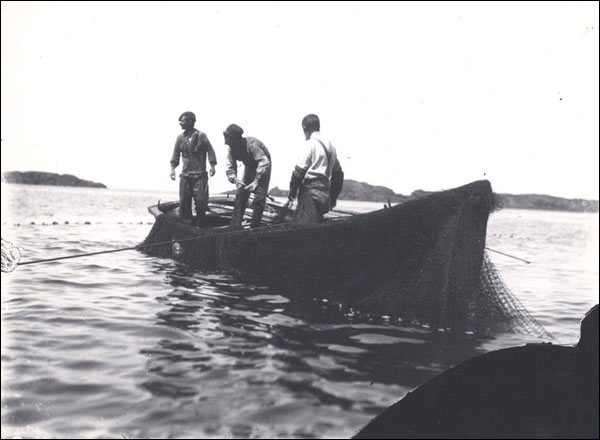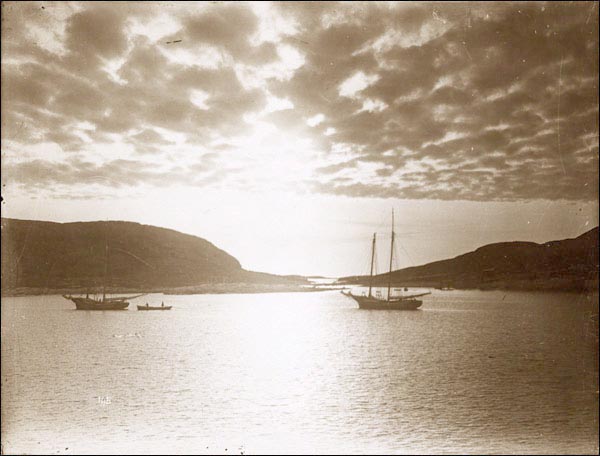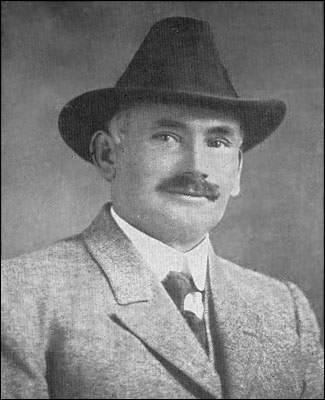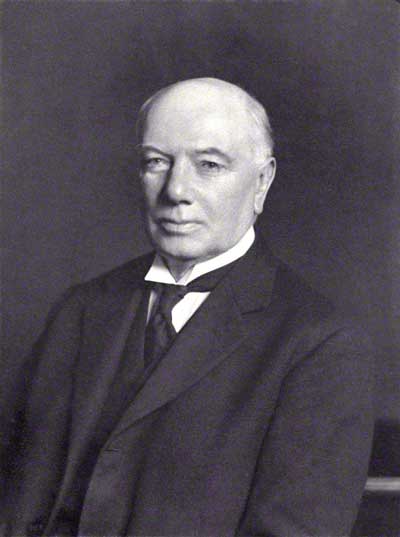Fishery Modernization - The Early Days
Historians and journalists often speak of the “collapse” of the Newfoundland cod fishery. Depending upon the source, this collapse came in 1793, 1815, 1860, 1920, 1933, or 1992, or one of many other points in between. In fact the saltfish industry in Newfoundland, as a cyclical extractive industry dependent on an open-access resource, went through multiple periods of boom and bust. Although the reasons for the cyclical problems of the fishing industry are complex, two related problems were very important. First, from the early 19th century, fishers had been able to deplete local substocks of northern cod. Backed by merchants, many fishers responded by introducing more efficient technologies for catching scarcer fish. While fishers had always used baited handlines, by the 1840s many were using trawl lines and seines, by the 1860s some were using gillnets, and by the 1890s other fishers were setting cod traps.

Even with the introduction of the cod trap, considered by most observers of the industry to be the most efficient of fishing gears, the catch of northern cod decreased by about 30 per cent over roughly the same period (1857 - 1891). The colony’s overall fish exports did not decline so precipitously, but only because of the expansion of fisheries in new areas, such as on the south and west coasts of the island, and on the Grand Banks, and at new times of the year, as people on the latter coasts, which were free of ice, began to fish during the winter. On the northeast coast of Newfoundland, fishers constantly searched northward along the Labrador coast for new areas to fish.
Second, the expansion of fishing effort by new technologies and fishing areas led to quality problems in the production of salt fish. The cod traps of the Labrador fishery yielded higher volumes of smaller fish, which cured poorly. Fishers had to ship their catch from the Labrador coast in salt for drying in Newfoundland. The extra handling involved in this shipping further damaged the fish, while those who tried to cure fish on the Labrador coast faced poorer conditions marked by damper weather.

Rather than trying to sort out the quality, fish merchants began to buy Labrador fish tal qual-- for one price regardless of quality. The practice of tal qual gave fishers even less incentive to put effort into producing a good quality cure, since a larger quantity of poorer fish would pay them more. Poor quality led to poor marketing practices. Merchants rushed to market as much fish as possible in the hope of beating competitors. Fish buyers would not initially be sure how much fish would be available that season, and paid premium prices. Once other shipments arrived and started to undersell each other, fish began to flood the market and prices dropped.
The many new fishing gears and larger vessels required to bolster catch rates meant that the overhead costs of the fishery continued to rise even as the price for Newfoundland fish fell. To make matters worse, the number of people who relied on the fishery for a living continued to grow at a rate that far outstripped catch rates. Although many young people left fishing communities, the demand for credit continued to grow. Fish merchants tended to extend credit only to clients who used more capital-intensive gears and boats. Cod traps served as useful collateral for merchants’ credit, but they could not stem the ecological and economic problems associated with declining catch rates, quality, and fish prices. Merchants were unable to escape the problem of over-extending credit amidst such problems, which contributed to the Bank Crash of 1894. Although the fishery revived during the First World War, post-war recession led to another collapse. Sir William Coaker, the political leader of the Fishermen’s Protective Union, hoped to restore the fishery by the better regulation of marketing, but his regulations failed in 1921. By the 1930s the Newfoundland saltfish economy was essentially unchanged over the previous 100-odd years except in one important respect; the number of people chasing the same limited resource was outpacing the resource’s ability to sustain itself.

The Amulree Recommendations
The global economic recession that followed the First World War deepened as a depression in Newfoundland and Labrador throughout the 1920s. In 1931 Britain left the gold standard and as a result the value of the pound sterling dropped - a body blow to the Newfoundland fisheries, whose exports were denominated in a suddenly weakened currency. Newfoundland’s national debt, some of it related to the expenses incurred in fighting World War I, ballooned to dangerous levels in the first years of the 1930s. In November 1932 the Newfoundland government announced a partial default on the public debt. Canada and Britain stepped up to support Newfoundland and guarantee full payment, but requested a commission of inquiry into Newfoundland’s affairs as a condition of this support. The Newfoundland Royal Commission, 1933, recommended remedies for Newfoundland’s profound economic problems. William Mackenzie, First Baron Amulree, was the chairman. The Commission recommended that Newfoundland be “given a rest from party politics for a period of years” and that responsible government should be suspended. By 1934, the year in which the legislature voted itself out of office and the administration of Newfoundland passed into the hands of an unelected Commission, the economy was prostrate and the population was in distress. Multiple internal problems in the fisheries, ranging from the ecological to the organizational, were compounded by a severe global depression and the collapse of the markets for Newfoundland fish.
The Amulree Commission’s other recommendations included administration of the fisheries (along with forests, agriculture and mines) by a Commissioner of Natural Resources, who was to come from the United Kingdom, not Newfoundland. Amulree appreciated the overriding importance of the cod fishery as the “mainstay of the island” and made a series of clear recommendations. Administrative control needed to be both professionalized and de-politicized. He recommended the setting up of a fisheries advisory board, replacing the ineffectual Fishery Research Commission. Professional inspectors installed in the important European markets of Portugal and Italy would administer the marketing of Newfoundland fish there and, importantly, would transmit market intelligence back to the Commissioner responsible for the fisheries in St. John’s. The prevailing credit system, which stood at the juncture of the fish harvesters and the merchants was seen as “nothing more or less than a truck system which fosters inefficiency and laxity” and which “keeps the fisherman in a condition bordering on servitude,” would be replaced in stages by a modern cash economy. Amulree also recommended the formation of fishermen’s mutual societies and advocated an overall system of co-operative structures which would give a constructive sense of ownership to the fishers themselves. Seeing the existing fishing season as practiced by Newfoundlanders as being too short, Amulree recommended as well that the “deep sea” (bank) fishery be resuscitated and that the industry be professionalized, with better collection of statistics, inspectors in outports, and improved fisheries education.

Once instituted, the Commission of Government moved slowly to address some of these recommendations. The principal early achievement was the founding of the Newfoundland Fisheries Board in 1936. The Board’s able chairman, Raymond Gushue, proved to be an astute director. Unfortunately the institution of the Fisheries Board coincided with a renewed economic downturn both in Newfoundland and abroad. 1937 was a poor year for the fishery and plans to resettle some fishermen in farming areas were put on hold. By 1939 the government was forced to guarantee price floors for fish exports, although increased demand for foodstuffs during the Second World War improved conditions in the fishing industry.
Evil Days
The report of the Amulree Commission almost certainly overstated the problems of Newfoundland’s fisheries and exaggerated the tribal political climate in St. John’s. Even so, it is hard to argue that the Newfoundland fisheries in the early 1930s were not profoundly dysfunctional and in need of corrective measures. In Amulree’s own words, or rather, in the words of the London official who wrote the Commission report, “The fishing industry has now fallen on such evil days that urgent action is needed for its revival.” In 1933, what loomed ahead for Newfoundland were the suspension of representative government, a number of years of economic uncertainty, and a long series of reports and studies of the fishing economy. It would be a long time, however, before some of the required changes were instituted. In some ways, the fisheries never really recovered from the crisis of the “evil days” of the early 1930s.




